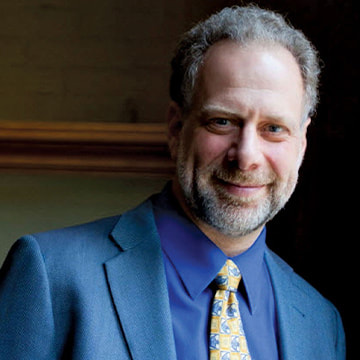|
Daniel Lieberman, PhD
Edwin M Lerner II Professor of Biological Sciences at Harvard University, USA Dr. Lieberman is a paleoanthropologist at Harvard University, where he is the Edwin M Lerner II Professor of Biological Sciences, and Professor in the Department of Human Evolutionary Biology. He is best known for his research on the evolution of the human head and the evolution of the human body. Dr. Lieberman studies how and why the human body is the way it is, with a primary focus on the evolution of physical activity. His research combines paleontology, anatomy, physiology and experimental biomechanics in the lab and in the field. In his career, he initially focused to a large extent on why and how humans have such unusual heads. Since 2004 most of his research has focused on the evolution of human locomotion including whether the first hominins were bipeds, why bipedalism evolved, the biomechanical challenges of pregnancy in females, how locomotion affects skeletal function and, most especially, the evolution of running. His 2004 paper with Dennis Bramble, “Endurance Running and the Evolution of the Genus Homo” proposed that humans evolved to run long distances to scavenge and hunt. His research on running in general, especially barefoot running, was popularized in Chris McDougall’s best-selling book Born to Run. Dr. Lieberman is an avid marathon runner, often barefoot, which has earned him the nickname “The Barefoot Professor”. Dr. Lieberman was educated at Harvard University, where he got his B.A., M.A. and Ph.D. degrees. He also received a M. Phil from Cambridge University. He was a Junior Fellow in the Harvard Society of Fellows and taught at Rutgers University and George Washington University before becoming a professor at Harvard University in 2001. He is on the curatorial board of the Peabody Museum of Archaeology and Ethnology, a member of the Department of Organismic and Evolutionary Biology at Harvard, and the Scientific Executive Committee of the L.S.B. Leakey Foundation. He is also the director of the Skeletal Biology Laboratory at Harvard University. |
Metabesity 2021 Conference ServicesMetabesity 2021 c/o The Kitalys Institute
[email protected] |
Custom Management Group (CMG)
154 Hansen Road, Suite 201
Charlottesville, VA 22911 USA
[email protected]
+1 434-971-4788
custommanagement.com
Conference services for Metabesity 2021 are provided by The Kitalys Institute and Custom Management Group. If you need assistance with abstract submission or registration, please contact CMG by e-mail at [email protected] or by telephone at +1 434-971-4788.
154 Hansen Road, Suite 201
Charlottesville, VA 22911 USA
[email protected]
+1 434-971-4788
custommanagement.com
Conference services for Metabesity 2021 are provided by The Kitalys Institute and Custom Management Group. If you need assistance with abstract submission or registration, please contact CMG by e-mail at [email protected] or by telephone at +1 434-971-4788.
COPYRIGHT METABESITY 2021


